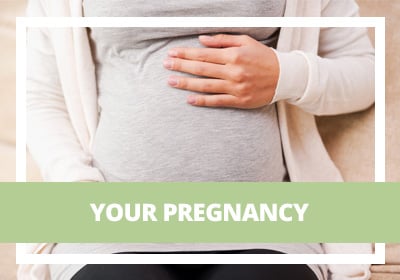Choosing the Right Car Seat
Using a car seat (child safety seat) is the best way to protect kids when traveling by car. And you'll want to have your newborn's car seat all ready and checked for safety and proper installment before the big day. Every state in the United States requires that an infant or small child be restrained. And with good reason — unintentional injury is the leading cause of death in children, and most such injuries are from automobile crashes.
Child safety seats can greatly reduce the risk of a potentially fatal injury, especially for babies but also for toddlers. Yet many safety seats are used incorrectly. When choosing any car seat, following some general guidelines will help ensure a child's safety.
The best car seat is not always the most expensive one — it's the one that best fits a child's weight, size, and age, as well as your vehicle. Once you select a seat, be sure to try it out, keeping in mind that store displays and illustrations might not show the correct usage. It's up to you to learn how to install a car safety seat properly and harness your child for the ride.
If you need help installing your safety seat or would like a technician to check whether you've installed it properly, the federal government has set up child car seat inspection stations across the country. Also, many local health departments, public safety groups, hospitals, law enforcement agencies, and fire departments have technicians or fitting stations to help parents. (If you go to one of these locations, be sure to ask for a certified child passenger safety technician.)
Guidelines for Choosing Car Seats
- Choose a seat with a label that states that it meets or exceeds Federal Motor Vehicle Safety Standard 213.
- Accept a used seat with caution. Never use a seat that's more than 6 years old or one that was in a crash (even if it looks OK, it could be structurally unsound). Avoid seats that are missing parts, are not labeled with the manufacture date and model number (you'll have no way to know about recalls), or do not come with an instruction manual. Also, check the seat for the manufacturer's recommended "expiration date." If you have any doubts about a seat's history, or if it is cracked or shows signs of wear and tear, don't use it.
- If you accept a used seat, contact the manufacturer for recommendations on how long the seat can safely be used and to find out if it's ever been recalled. Recalls are quite common, and the manufacturer might be able to provide you with a replacement part or new model.
- Be sure to fill out the product registration card so you will be notified about recalls right away.
Infant-Only Seats (Birth to 22-35 Pounds)
Infant-only seats fit newborns and smaller infants best, so you will have to buy another seat as your baby outgrows it. Infant-only seats are designed to protect babies from birth until they reach up to 35 pounds (about 16 kilograms), depending on the model.
Infant car seats should always be installed to face the rear of the car. A child under age 2 is 75% less likely to die or be seriously injured when in a rear-facing seat because the back of the safety seat will cradle the baby's head, neck, and torso in a crash (at this age, a child's neck usually isn't strong enough to support the head in a crash).
The American Academy of Pediatrics (AAP) recommends that infants and toddlers ride in a rear-facing seat until they're 2 years old or until they reach the maximum weight and height limits recommended by the seat's manufacturer.
So it's essential to follow the height and weight guidelines on the child safety seat and keep your child in a seat that faces the rear as long as it's possible and the seat still fits.
Infant-only safety seats are convenient because they're designed to double as carriers, chairs, or rockers when not used in the car. Many models detach right from the base, allowing you to leave the base installed in the car.
Try to limit the amount of time your baby spends in this type of seat while you're at home or while the baby is at childcare. Too much time in a car seat can limit a baby's movement and opportunities for stimulation, which are important for developing sensory and motor skills.
How to Install an Infant-Only Seat
Before installing your baby's infant-only seat, read the product manual thoroughly. These tips can help with the installation:
- An infant-only seat should be placed in the back seat, ideally in the middle of the back seat, but most important, in a position where it fits securely.
- Read the owner's manual for your vehicle to find out how to use its seatbelts with a child safety seat.
- Use your knee to push down on the seat as you tighten the car's seatbelt through the belt path. The car seat should not move more than 1 inch (3 centimeters) from side to side or forward and backward at the belt path. If the seat wiggles or moves on the belt path, the belt needs to be tighter.
- Some seatbelts may require a special locking clip designed to keep the belt from loosening. Locking clips are available from baby product stores, safety seat manufacturers, and some car dealerships.
- Be sure to check the tightness of the safety seat before each use.
- Never use an infant-only seat in a forward-facing position.
- The car seat should recline at no more than a 45-degree angle.
How to harness your infant
- Read the entire child safety seat manual.
- Your baby's head should be at least 2 inches (6 centimeters) below the top of the safety seat.
- Infant-only seats are usually designed with a 3-point or 5-point harness. The harness should always be placed in the slots and should always be at or below your baby's shoulders. Most models have a chest clip that holds the harness straps together. Move the clip so the top of it is level with your baby's armpits.
- All harness straps should fit snugly, especially over the shoulder and thigh areas. Straps should always lie flat, never twisted. If you can pinch any harness webbing between your fingers, it's too loose.
- Dress your baby in clothes that keep his or her legs free. This will allow you to buckle the latch crotch strap properly between the legs. If it's cold outside, harness your baby first and then cover him or her with a blanket (never cover your baby's head). Never buckle a blanket under or behind the baby.
- If your baby slouches to one side in the seat (common with newborns), place rolled-up cloth diapers or rolled hand towels on each side of the shoulders. There are supports specially designed for car seats, but only use them if they came manufactured with your safety seat. Never place any kind of padding or blanket under your baby — this can affect the harness's ability to restrain your little one.
- If your baby's head flops forward (also common with newborns), check the angle of the seat. Use a towel or blanket to tilt the seat back slightly (a 30- to 45-degree angle is best).
Convertible Seats
- Convertible seats are designed to protect kids from birth up to at least 40 pounds (18 kilograms) facing backward, and up to 65 pounds (30 kilograms) or even 80 pounds (36 kilograms) facing forward, depending on the model.
- Convertible seats are the only type of seats that are placed in different positions depending on a child's age: They face toward the rear until a baby is ready to face forward, when they can be turned around and "converted" to a forward-facing seat.
- Weight ranges vary on convertible car seats, so it is important to consider a child's height and weight before buying one. Convertible seats are heavy and not very portable. Yet they can be economical because it may not be necessary to buy a separate infant-only seat. It's also a good option for larger babies who outgrow their infant-only seat and still need to be rear facing.
- If using a convertible seat, make sure it fits your child correctly — a small child in a large seat may not be the best option. Models with tray shields should not be used for newborns — the shield comes up too high on them, and in a crash the baby's face could hit the tray.
How to Install a Convertible Seat
- An infant or small toddler should be placed in the back seat — preferably in the middle — and must be facing toward the rear of the vehicle until 2 years of age or until reaching the maximum weight and height limits recommended by the seat's manufacturer. A child who reaches the height and weight limits before age 2 is safest in a bigger convertible seat and kept rear facing. Kids who are small can remain in rear-facing seats even after age 2. (Follow the manufacturer's guidelines for when to turn the seat.)
- Read the owner's manual for your vehicle to find out how to use your car's seatbelts or LATCH (Lower Anchors and Tethers for Children) system with a child safety seat.
- Read the entire child safety seat manual. Be sure to check the recommended angle of recline for the seat when it is forward facing and rear facing.
- Use your knee to push down on the seat as you tighten the car's seatbelt (lap-only or lap/shoulder) or LATCH attachment belt through the child safety seat's belt path. The seat should not move more than 1 inch (3 centimeters) side to side or forward and backward on the belt path. If the seat wiggles or moves on the belt path, the belt needs to be tighter.
- Some seatbelts may require a special locking clip designed to keep the belt from loosening. Locking clips are available from baby product stores, safety seat manufacturers, and some car dealerships.
- Be sure to check the tightness of the safety seat before each use.
How to harness infants and toddlers
- Read the entire child safety seat manual.
- Shoulder straps should be threaded through the lowest harness slots to best protect your baby. They should be at or below your baby's shoulders.
- Convertible seats usually have one of three harness options: the 5-point harness, the tray shield, and the T-shield. The 5-point harness offers the best protection for infants because it can tighten to fit snugly and does not obstruct the baby's head. Both of the other harness options can cover a baby's face and are not recommended for infants under 20 pounds (10 kilograms) or younger than 1 year old.
- All straps should fit snugly, especially over the shoulder and thigh areas. Straps should always lie flat, never twisted. If you can pinch any harness webbing between your fingers, it's too loose.
- Dress your baby in clothes that keep the legs free. This will allow you to buckle the latch crotch strap properly between the baby's legs. If it is cold outside, harness your baby first and then cover him or her with a blanket (but never cover your baby's head). Never buckle a blanket under the seat straps.
- If your baby slouches to one side or the other in the seat (common among newborns), place rolled-up cloth diapers or rolled hand towels on each side of the shoulders. There are supports specially designed for car seats, but only use them if they came manufactured with your safety seat. Never place any kind of padding or blanket under your baby — this can affect the harness's ability to restrain your little one.
- If your baby's head flops forward (also common with newborns), check the angle of the seat. Use a towel or blanket to tilt the seat back slightly (a 30- to 45-degree angle is best).
- Be sure to readjust harness straps as your child grows. Heavy clothing (such as a puffy winter coat) should always be placed over your child after being harnessed in the seat. (A tip: After your child is harnessed in the seat, slip his or her coat on backward for warmth.)
Forward-Facing-Only Seats (20-80 pounds)
- Forward-facing car seats are designed to protect children from 20 to 80 pounds (about 10 to 36 kilograms) or more, depending on the model.
- All kids 2 years or older, or those younger than 2 years who have outgrown the rear-facing height or weight limit for their car seat, should use a forward-facing car seat with a full harness for as long as possible. They should only switch to a booster seat that relies on the car's adult seatbelts when they exceed the height and weight limit for their forward-facing car seat.
- Combination car seats are also available that allow you to remove the harness to switch from forward-facing child safety seat to belt-positioning booster seat. Review the forward-facing convertible seat for toddlers information mentioned earlier in this article regarding proper installation of forward-facing car seats and harnessing your child.
- Built-in or integrated car seats can be found in some vehicles. As with other forward-facing car safety seats, built-in seats are for kids 2 years of age and older. Some convert to belt-positioning booster seats. Weight and height limits will vary so be sure to check your owner's manual.
The LATCH System
Since September 2002, most new vehicles have safety seat anchorage points and most safety seats have anchor attachments.
One of the problems with installing safety seats properly has been incompatibility between the car seat and the vehicle. The Lower Anchors and Tethers for Children (LATCH) system was devised to make installation easier because it does not require use of the car's seatbelts. Instead, a tether strap secures the top of the safety seat to an anchorage point either on the rear shelf area, the rear floor, or the back of the rear seat of the car, depending on the vehicle model. Lower anchors secure attachments on the bottom of the safety seat to a point located between the car's seat cushion and seat back.
You should use LATCH only in seating positions recommended by both the vehicle manufacturer and the car seat manufacturer. Never use both the seatbelt and LATCH to install a car seat. Choose whichever method secures the car seat best. Most forward-facing safety seats made after September 1999 are equipped with top tether straps, and most vehicles made after September 2000 have tether anchors. Since September 2002, most new vehicles also have lower safety seat anchorage points and most safety seats have lower anchor attachments.
If your vehicle or safety seat was purchased after these dates and didn't come with tethers or anchors, call the manufacturer.
Air Bags and Kids
When combined with safety belts, air bags protect adults and teens from injury during a collision. They have saved lives and prevented many serious injuries. But infants and children can be injured or even killed if they are riding in the front passenger seat when an air bag opens.
Air bags were designed with adults in mind: They must open with great force (up to 200 miles per hour) to protect an average-sized, 165-pound (75-kilogram) male from injury. While this force is appropriate for adults and bigger kids, it can be dangerous for small children, possibly resulting in head and neck injuries.
Protect your baby or toddler from air bag injury by following these rules:
- Air bags present a serious danger for babies riding in rear-facing car seats. Never place a rear-facing infant seat in the front seat of a car that is equipped with a passenger-side air bag.
- Child safety seats should be placed in the back seat. If you have no choice and must place a child in a car seat in the front (that is, if your car is a two-seater or if the car seat will not fit in the back seat), push the passenger seat as far back as it will go.
- A law passed in 1995 allows car manufacturers to install a manual cut-off switch that temporarily disables a passenger-side air bag. As recommended by National Highway Traffic Safety Administration, if you must place a child in a car seat in the front seat and your car has this cut-off switch, disable the air bag for the duration of the ride. Be sure to switch the air bag back on when you remove the car seat.
More Questions? We've Got Answers.
Choose a location
- Aledo-Willow Park
- Allen
- Anna
- Arlington
- Aubrey
- Bedford
- Burleson
- Carrollton
- Celina
- Cityview
- Clearfork
- Collin County
- Ennis
- Flower Mound
- Forest Park
- Granbury
- Grapevine
- Haslet
- Henderson
- Hurst
- Keller Heritage
- Keller Parkway
- Lake Forest
- Lake Worth
- Lakewood
- Legacy
- Lewisville/Castle Hills
- Little Elm
- Magnolia
- Mansfield
- McKinney
- North Denton
- Parkwood
- Plano
- Prosper Trail
- South Denton
- Southlake
- Southwest
- Stephenville
- Trophy Club
- Walsh Ranch
- Waxahachie
- West Frisco
- Windhaven
- Windsong
Note: All information is for educational purposes only. For specific medical advice, diagnoses, and treatment, consult your doctor. © 1995-2018 KidsHealth® All rights reserved. Images provided by Cook Children's, The Nemours Foundation, iStock, Getty Images, Veer, Shutterstock, and Clipart.com.



